Open Cascade Data Exchange STL
摘要Abstract:介绍了三维数据交换格式STL的组成,以及Open Cascade中对STL的读写。并将Open Cascade读进来的STL的三角面片在OpenSceneGraph中显示。
关键字Key Words:STL, Open Cascade, OpenSceneGraph, Data Exchange
STL(the Stereo Lithograpy)是快速原型系统所应用的标准文件类型。它的目的是将几何数据发送到可以读取和解释这些数据的机器,这种机器可将模型转换成塑料的物理模型。STL是用三角网格来表示三维模型的。STL文件格式简单,只能描述三维物体的几何信息,不支持颜色、材质等信息,是三维打印机支持的最常见的文件格式。由于STL文件的网格表示方法只能表示封闭的形状,所以要转换的形状必须是实体,或封闭的面和体。STL文件有两种:一种是明码(ASCII)格式,一种是二进制(Binary)格式。
一、STL的明码(ASCII)格式
ASCII格式的STL文件逐行给出三角面片的几何信息,每行以1个或2个关键字开头。STL文件中的三角面片的信息单元facet是一个带法向方向的三角面片,STL三维模型就是由这一系列的三角面片构成。整个STL文件的首行给出了文件路径及文件名。在一个STL文件中,每个facet由7行数据组成:facet normal是三角面片指向实体外部的单位法矢量;outer loop说明随后的3行数据分别是三角面片的3个顶点坐标,3顶点沿指向实体外部的法矢量方向逆时针排列。
ASCII格式的STL文件结构如下:
说明如下:
下面给出由Open Cascade中导出的一个长方体的STL文件:
长方体的尺寸为长200,宽150,高100,原点在一个角点上。
Figure 1.1 Box in Open Cascade
solid facet normal -1.000000e+000 -0.000000e+000 -0.000000e+000 outer loop vertex 0.000000e+000 1.500000e+002 1.000000e+002 vertex 0.000000e+000 1.500000e+002 0.000000e+000 vertex 0.000000e+000 0.000000e+000 1.000000e+002 endloop endfacet facet normal -1.000000e+000 0.000000e+000 0.000000e+000 outer loop vertex 0.000000e+000 1.500000e+002 0.000000e+000 vertex 0.000000e+000 0.000000e+000 0.000000e+000 vertex 0.000000e+000 0.000000e+000 1.000000e+002 endloop endfacet facet normal 1.000000e+000 -0.000000e+000 0.000000e+000 outer loop vertex 2.000000e+002 0.000000e+000 1.000000e+002 vertex 2.000000e+002 1.500000e+002 0.000000e+000 vertex 2.000000e+002 1.500000e+002 1.000000e+002 endloop endfacet facet normal 1.000000e+000 -0.000000e+000 0.000000e+000 outer loop vertex 2.000000e+002 0.000000e+000 1.000000e+002 vertex 2.000000e+002 0.000000e+000 0.000000e+000 vertex 2.000000e+002 1.500000e+002 0.000000e+000 endloop endfacet facet normal 0.000000e+000 -1.000000e+000 0.000000e+000 outer loop vertex 0.000000e+000 0.000000e+000 0.000000e+000 vertex 2.000000e+002 0.000000e+000 0.000000e+000 vertex 2.000000e+002 0.000000e+000 1.000000e+002 endloop endfacet facet normal 0.000000e+000 -1.000000e+000 0.000000e+000 outer loop vertex 0.000000e+000 0.000000e+000 1.000000e+002 vertex 0.000000e+000 0.000000e+000 0.000000e+000 vertex 2.000000e+002 0.000000e+000 1.000000e+002 endloop endfacet facet normal 0.000000e+000 1.000000e+000 0.000000e+000 outer loop vertex 2.000000e+002 1.500000e+002 1.000000e+002 vertex 2.000000e+002 1.500000e+002 0.000000e+000 vertex 0.000000e+000 1.500000e+002 0.000000e+000 endloop endfacet facet normal 0.000000e+000 1.000000e+000 -0.000000e+000 outer loop vertex 2.000000e+002 1.500000e+002 1.000000e+002 vertex 0.000000e+000 1.500000e+002 0.000000e+000 vertex 0.000000e+000 1.500000e+002 1.000000e+002 endloop endfacet facet normal 0.000000e+000 0.000000e+000 -1.000000e+000 outer loop vertex 0.000000e+000 0.000000e+000 0.000000e+000 vertex 0.000000e+000 1.500000e+002 0.000000e+000 vertex 2.000000e+002 1.500000e+002 0.000000e+000 endloop endfacet facet normal 0.000000e+000 0.000000e+000 -1.000000e+000 outer loop vertex 2.000000e+002 0.000000e+000 0.000000e+000 vertex 0.000000e+000 0.000000e+000 0.000000e+000 vertex 2.000000e+002 1.500000e+002 0.000000e+000 endloop endfacet facet normal 0.000000e+000 0.000000e+000 1.000000e+000 outer loop vertex 2.000000e+002 1.500000e+002 1.000000e+002 vertex 0.000000e+000 1.500000e+002 1.000000e+002 vertex 0.000000e+000 0.000000e+000 1.000000e+002 endloop endfacet facet normal -0.000000e+000 0.000000e+000 1.000000e+000 outer loop vertex 2.000000e+002 1.500000e+002 1.000000e+002 vertex 0.000000e+000 0.000000e+000 1.000000e+002 vertex 2.000000e+002 0.000000e+000 1.000000e+002 endloop endfacet endsolid
由上面的STL明码文件可知,上述数据将一个长方体的6个面用12个三角形来表示。在OpenSceneGraph中显示效果如下图所示,分别为此长方体的实体渲染模式和线框渲染模式:
Figure 1.2 Shaded and Wireframe box in OpenSceneGraph
二、STL的二进制(Binary)格式
二进制的STL文件用固定的字节数来给出三角面片的几何信息。文件起始80个字节是文件头,用于存贮零件名;紧接着4个字节的整数来描述模型的三角面片个数;后面逐个给出每个三角面片的几何信息。每个三角面片用固定的50个字节,依次是表示三角面片的法矢量的3个4字节浮点数;表示三角面片三个顶点的3×3个4字节浮点数;最后2个字节用来描述三角面片的属性信息。
三、OCC中STL文件的读写Read/Write STL in Open Cascade
在Open Cascade中STL文件的读写分别使用类:StlAPI_Reader/StlAPI_Writer来实现。查看源程序可知,写STL文件的步骤如下:
l 遍历一个TopoDS_Shape所有的面Face;
l 使用工具BRep_Tool::Triangulation将每个面Face三角面片化;
l 计算每个三角面片的法矢量;
l 将结果写入文件。
类RWStl对STL的读定也是有两种格式,即ASCII格式和Binary格式:
n RWStl::WriteBinary
n RWStl::WriteAscii
n RWStl::ReadBinary
n RWStl::ReadAscii
程序的具体实现可以查看Open Cascade源代码,将读写部分主要代码RWStl.cxx列出如下:
// Created on: 1994-10-13 // Created by: Marc LEGAY // Copyright (c) 1994-1999 Matra Datavision // Copyright (c) 1999-2012 OPEN CASCADE SAS // // The content of this file is subject to the Open CASCADE Technology Public // License Version 6.5 (the \"License\"). You may not use the content of this file // except in compliance with the License. Please obtain a copy of the License // at http://www.opencascade.org and read it completely before using this file. // // The Initial Developer of the Original Code is Open CASCADE S.A.S., having its // main offices at: 1, place des Freres Montgolfier, 78280 Guyancourt, France. // // The Original Code and all software distributed under the License is // distributed on an \"AS IS\" basis, without warranty of any kind, and the // Initial Developer hereby disclaims all such warranties, including without // limitation, any warranties of merchantability, fitness for a particular // purpose or non-infringement. Please see the License for the specific terms // and conditions governing the rights and limitations under the License. #include <RWStl.ixx> #include <OSD_Protection.hxx> #include <OSD_File.hxx> #include <Message_ProgressSentry.hxx> #include <TCollection_AsciiString.hxx> #include <Standard_NoMoreObject.hxx> #include <Standard_TypeMismatch.hxx> #include <Precision.hxx> #include <StlMesh_MeshExplorer.hxx> #include <OSD.hxx> #include <OSD_Host.hxx> #include <gp_XYZ.hxx> #include <gp.hxx> #include <stdio.h> #include <gp_Vec.hxx> // constants static const int HEADER_SIZE = 84; static const int SIZEOF_STL_FACET = 50; static const int STL_MIN_FILE_SIZE = 284; static const int ASCII_LINES_PER_FACET = 7; static const int IND_THRESHOLD = 1000; // increment the indicator every 1k triangles //======================================================================= //function : WriteInteger //purpose : writing a Little Endian 32 bits integer //======================================================================= inline static void WriteInteger(OSD_File& ofile,const Standard_Integer value) { union { Standard_Integer i;// don\'t be afraid, this is just an unsigned int char c[4]; } bidargum; bidargum.i = value; Standard_Integer entier; entier = bidargum.c[0] & 0xFF; entier |= (bidargum.c[1] & 0xFF) << 0x08; entier |= (bidargum.c[2] & 0xFF) << 0x10; entier |= (bidargum.c[3] & 0xFF) << 0x18; ofile.Write((char *)&entier,sizeof(bidargum.c)); } //======================================================================= //function : WriteDouble2Float //purpose : writing a Little Endian 32 bits float //======================================================================= inline static void WriteDouble2Float(OSD_File& ofile,Standard_Real value) { union { Standard_ShortReal f; char c[4]; } bidargum; bidargum.f = (Standard_ShortReal)value; Standard_Integer entier; entier = bidargum.c[0] & 0xFF; entier |= (bidargum.c[1] & 0xFF) << 0x08; entier |= (bidargum.c[2] & 0xFF) << 0x10; entier |= (bidargum.c[3] & 0xFF) << 0x18; ofile.Write((char *)&entier,sizeof(bidargum.c)); } //======================================================================= //function : readFloat2Double //purpose : reading a Little Endian 32 bits float //======================================================================= inline static Standard_Real ReadFloat2Double(OSD_File &aFile) { union { Standard_Boolean i; // don\'t be afraid, this is just an unsigned int Standard_ShortReal f; }bidargum; char c[4]; Standard_Address adr; adr = (Standard_Address)c; Standard_Integer lread; aFile.Read(adr,4,lread); bidargum.i = c[0] & 0xFF; bidargum.i |= (c[1] & 0xFF) << 0x08; bidargum.i |= (c[2] & 0xFF) << 0x10; bidargum.i |= (c[3] & 0xFF) << 0x18; return (Standard_Real)(bidargum.f); } //======================================================================= //function : WriteBinary //purpose : write a binary STL file in Little Endian format //======================================================================= Standard_Boolean RWStl::WriteBinary (const Handle(StlMesh_Mesh)& theMesh, const OSD_Path& thePath, const Handle(Message_ProgressIndicator)& theProgInd) { OSD_File aFile (thePath); aFile.Build (OSD_WriteOnly, OSD_Protection()); Standard_Real x1, y1, z1; Standard_Real x2, y2, z2; Standard_Real x3, y3, z3; // writing 80 bytes of the trash? char sval[80]; aFile.Write ((Standard_Address)sval,80); WriteInteger (aFile, theMesh->NbTriangles()); int dum=0; StlMesh_MeshExplorer aMexp (theMesh); // create progress sentry for domains Standard_Integer aNbDomains = theMesh->NbDomains(); Message_ProgressSentry aDPS (theProgInd, \"Mesh domains\", 0, aNbDomains, 1); for (Standard_Integer nbd = 1; nbd <= aNbDomains && aDPS.More(); nbd++, aDPS.Next()) { // create progress sentry for triangles in domain Message_ProgressSentry aTPS (theProgInd, \"Triangles\", 0, theMesh->NbTriangles (nbd), IND_THRESHOLD); Standard_Integer aTriangleInd = 0; for (aMexp.InitTriangle (nbd); aMexp.MoreTriangle(); aMexp.NextTriangle()) { aMexp.TriangleVertices (x1,y1,z1,x2,y2,z2,x3,y3,z3); //pgo aMexp.TriangleOrientation (x,y,z); gp_XYZ Vect12 ((x2-x1), (y2-y1), (z2-z1)); gp_XYZ Vect13 ((x3-x1), (y3-y1), (z3-z1)); gp_XYZ Vnorm = Vect12 ^ Vect13; Standard_Real Vmodul = Vnorm.Modulus (); if (Vmodul > gp::Resolution()) { Vnorm.Divide(Vmodul); } else { // si Vnorm est quasi-nul, on le charge a 0 explicitement Vnorm.SetCoord (0., 0., 0.); } WriteDouble2Float (aFile, Vnorm.X()); WriteDouble2Float (aFile, Vnorm.Y()); WriteDouble2Float (aFile, Vnorm.Z()); WriteDouble2Float (aFile, x1); WriteDouble2Float (aFile, y1); WriteDouble2Float (aFile, z1); WriteDouble2Float (aFile, x2); WriteDouble2Float (aFile, y2); WriteDouble2Float (aFile, z2); WriteDouble2Float (aFile, x3); WriteDouble2Float (aFile, y3); WriteDouble2Float (aFile, z3); aFile.Write (&dum, 2); // update progress only per 1k triangles if (++aTriangleInd % IND_THRESHOLD == 0) { if (!aTPS.More()) break; aTPS.Next(); } } } aFile.Close(); Standard_Boolean isInterrupted = !aDPS.More(); return !isInterrupted; } //======================================================================= //function : WriteAscii //purpose : write an ASCII STL file //======================================================================= Standard_Boolean RWStl::WriteAscii (const Handle(StlMesh_Mesh)& theMesh, const OSD_Path& thePath, const Handle(Message_ProgressIndicator)& theProgInd) { OSD_File theFile (thePath); theFile.Build(OSD_WriteOnly,OSD_Protection()); TCollection_AsciiString buf (\"solid\\n\"); theFile.Write (buf,buf.Length());buf.Clear(); Standard_Real x1, y1, z1; Standard_Real x2, y2, z2; Standard_Real x3, y3, z3; char sval[512]; // create progress sentry for domains Standard_Integer aNbDomains = theMesh->NbDomains(); Message_ProgressSentry aDPS (theProgInd, \"Mesh domains\", 0, aNbDomains, 1); StlMesh_MeshExplorer aMexp (theMesh); for (Standard_Integer nbd = 1; nbd <= aNbDomains && aDPS.More(); nbd++, aDPS.Next()) { // create progress sentry for triangles in domain Message_ProgressSentry aTPS (theProgInd, \"Triangles\", 0, theMesh->NbTriangles (nbd), IND_THRESHOLD); Standard_Integer aTriangleInd = 0; for (aMexp.InitTriangle (nbd); aMexp.MoreTriangle(); aMexp.NextTriangle()) { aMexp.TriangleVertices (x1,y1,z1,x2,y2,z2,x3,y3,z3); // Standard_Real x, y, z; // aMexp.TriangleOrientation (x,y,z); gp_XYZ Vect12 ((x2-x1), (y2-y1), (z2-z1)); gp_XYZ Vect23 ((x3-x2), (y3-y2), (z3-z2)); gp_XYZ Vnorm = Vect12 ^ Vect23; Standard_Real Vmodul = Vnorm.Modulus (); if (Vmodul > gp::Resolution()) { Vnorm.Divide (Vmodul); } else { // si Vnorm est quasi-nul, on le charge a 0 explicitement Vnorm.SetCoord (0., 0., 0.); } Sprintf (sval, \" facet normal % 12e % 12e % 12e\\n\" \" outer loop\\n\" \" vertex % 12e % 12e % 12e\\n\" \" vertex % 12e % 12e % 12e\\n\" \" vertex % 12e % 12e % 12e\\n\" \" endloop\\n\" \" endfacet\\n\", Vnorm.X(), Vnorm.Y(), Vnorm.Z(), x1, y1, z1, x2, y2, z2, x3, y3, z3); buf += sval; theFile.Write (buf, buf.Length()); buf.Clear(); // update progress only per 1k triangles if (++aTriangleInd % IND_THRESHOLD == 0) { if (!aTPS.More()) break; aTPS.Next(); } } } buf += \"endsolid\\n\"; theFile.Write (buf, buf.Length()); buf.Clear(); theFile.Close(); Standard_Boolean isInterrupted = !aDPS.More(); return !isInterrupted; } //======================================================================= //function : ReadFile //Design : //Warning : //======================================================================= Handle_StlMesh_Mesh RWStl::ReadFile (const OSD_Path& thePath, const Handle(Message_ProgressIndicator)& theProgInd) { OSD_File file (thePath); file.Open(OSD_ReadOnly,OSD_Protection(OSD_RWD,OSD_RWD,OSD_RWD,OSD_RWD)); Standard_Boolean IsAscii; unsigned char str[128]; Standard_Integer lread,i; Standard_Address ach; ach = (Standard_Address)str; // we skip the header which is in Ascii for both modes file.Read(ach,HEADER_SIZE,lread); // we read 128 characters to detect if we have a non-ascii char file.Read(ach,sizeof(str),lread); IsAscii = Standard_True; for (i = 0; i< lread && IsAscii; ++i) { if (str[i] > \'~\') { IsAscii = Standard_False; } } #ifdef DEB cout << (IsAscii ? \"ascii\\n\" : \"binary\\n\"); #endif file.Close(); return IsAscii ? RWStl::ReadAscii (thePath, theProgInd) : RWStl::ReadBinary (thePath, theProgInd); } //======================================================================= //function : ReadBinary //Design : //Warning : //======================================================================= Handle_StlMesh_Mesh RWStl::ReadBinary (const OSD_Path& thePath, const Handle(Message_ProgressIndicator)& /*theProgInd*/) { Standard_Integer NBFACET; Standard_Integer ifacet; Standard_Real fx,fy,fz,fx1,fy1,fz1,fx2,fy2,fz2,fx3,fy3,fz3; Standard_Integer i1,i2,i3,lread; char buftest[5]; Standard_Address adr; adr = (Standard_Address)buftest; // Open the file OSD_File theFile (thePath); theFile.Open(OSD_ReadOnly,OSD_Protection(OSD_RWD,OSD_RWD,OSD_RWD,OSD_RWD)); // the size of the file (minus the header size) // must be a multiple of SIZEOF_STL_FACET // compute file size Standard_Integer filesize = theFile.Size(); if ( (filesize - HEADER_SIZE) % SIZEOF_STL_FACET !=0 || (filesize < STL_MIN_FILE_SIZE)) { Standard_NoMoreObject::Raise(\"RWStl::ReadBinary (wrong file size)\"); } // don\'t trust the number of triangles which is coded in the file // sometimes it is wrong, and with this technique we don\'t need to swap endians for integer NBFACET = ((filesize - HEADER_SIZE) / SIZEOF_STL_FACET); // skip the header theFile.Seek(HEADER_SIZE,OSD_FromBeginning); // create the StlMesh_Mesh object Handle(StlMesh_Mesh) ReadMesh = new StlMesh_Mesh (); ReadMesh->AddDomain (); for (ifacet=1; ifacet<=NBFACET; ++ifacet) { // read normal coordinates fx = ReadFloat2Double(theFile); fy = ReadFloat2Double(theFile); fz = ReadFloat2Double(theFile); // read vertex 1 fx1 = ReadFloat2Double(theFile); fy1 = ReadFloat2Double(theFile); fz1 = ReadFloat2Double(theFile); // read vertex 2 fx2 = ReadFloat2Double(theFile); fy2 = ReadFloat2Double(theFile); fz2 = ReadFloat2Double(theFile); // read vertex 3 fx3 = ReadFloat2Double(theFile); fy3 = ReadFloat2Double(theFile); fz3 = ReadFloat2Double(theFile); i1 = ReadMesh->AddOnlyNewVertex (fx1,fy1,fz1); i2 = ReadMesh->AddOnlyNewVertex (fx2,fy2,fz2); i3 = ReadMesh->AddOnlyNewVertex (fx3,fy3,fz3); ReadMesh->AddTriangle (i1,i2,i3,fx,fy,fz); // skip extra bytes theFile.Read(adr,2,lread); } theFile.Close (); return ReadMesh; } //======================================================================= //function : ReadAscii //Design : //Warning : //======================================================================= Handle_StlMesh_Mesh RWStl::ReadAscii (const OSD_Path& thePath, const Handle(Message_ProgressIndicator)& theProgInd) { TCollection_AsciiString filename; long ipos; Standard_Integer nbLines = 0; Standard_Integer nbTris = 0; Standard_Integer iTri; Standard_Integer i1,i2,i3; Handle(StlMesh_Mesh) ReadMesh; thePath.SystemName (filename); // Open the file FILE* file = fopen(filename.ToCString(),\"r\"); fseek(file,0L,SEEK_END); long filesize = ftell(file); fclose(file); file = fopen(filename.ToCString(),\"r\"); // count the number of lines for (ipos = 0; ipos < filesize; ++ipos) { if (getc(file) == \'\\n\') nbLines++; } // compute number of triangles nbTris = (nbLines / ASCII_LINES_PER_FACET); // go back to the beginning of the file // fclose(file); // file = fopen(filename.ToCString(),\"r\"); rewind(file); // skip header while (getc(file) != \'\\n\'); #ifdef DEB cout << \"start mesh\\n\"; #endif ReadMesh = new StlMesh_Mesh(); ReadMesh->AddDomain(); // main reading Message_ProgressSentry aPS (theProgInd, \"Triangles\", 0, (nbTris - 1) * 1.0 / IND_THRESHOLD, 1); for (iTri = 0; iTri < nbTris && aPS.More();) { char x[256]=\"\", y[256]=\"\", z[256]=\"\"; // reading the facet normal if (3 != fscanf(file,\"%*s %*s %80s %80s %80s\\n\", x, y, z)) break; // error should be properly reported gp_XYZ aN (Atof(x), Atof(y), Atof(z)); // skip the keywords \"outer loop\" fscanf(file,\"%*s %*s\"); // reading vertex if (3 != fscanf(file,\"%*s %80s %80s %80s\\n\", x, y, z)) break; // error should be properly reported gp_XYZ aV1 (Atof(x), Atof(y), Atof(z)); if (3 != fscanf(file,\"%*s %80s %80s %80s\\n\", x, y, z)) break; // error should be properly reported gp_XYZ aV2 (Atof(x), Atof(y), Atof(z)); if (3 != fscanf(file,\"%*s %80s %80s %80s\\n\", x, y, z)) break; // error should be properly reported gp_XYZ aV3 (Atof(x), Atof(y), Atof(z)); // here the facet must be built and put in the mesh datastructure i1 = ReadMesh->AddOnlyNewVertex (aV1.X(), aV1.Y(), aV1.Z()); i2 = ReadMesh->AddOnlyNewVertex (aV2.X(), aV2.Y(), aV2.Z()); i3 = ReadMesh->AddOnlyNewVertex (aV3.X(), aV3.Y(), aV3.Z()); ReadMesh->AddTriangle (i1, i2, i3, aN.X(), aN.Y(), aN.Z()); // skip the keywords \"endloop\" fscanf(file,\"%*s\"); // skip the keywords \"endfacet\" fscanf(file,\"%*s\"); // update progress only per 1k triangles if (++iTri % IND_THRESHOLD == 0) aPS.Next(); } #ifdef DEB cout << \"end mesh\\n\"; #endif fclose(file); return ReadMesh; }
程序开始定义了一些常量:
// constants static const int HEADER_SIZE = 84; static const int SIZEOF_STL_FACET = 50; static const int STL_MIN_FILE_SIZE = 284; static const int ASCII_LINES_PER_FACET = 7;
分别对应二进制文件中相关信息,即文件头84个字节,每个三角面片50个字节,STL文件最小为284字节。ASCII的STL中每个三角面有7行。
在数据的读写过程中,对数据进行了小端转换。将double数据转换成小端表示的代码如下所示:
//===================================================================== //function : WriteDouble2Float //purpose : writing a Little Endian 32 bits float //===================================================================== inline static void WriteDouble2Float(OSD_File& ofile,Standard_Real value) { union { Standard_ShortReal f; char c[4]; } bidargum; bidargum.f = (Standard_ShortReal)value; Standard_Integer entier; entier = bidargum.c[0] & 0xFF; entier |= (bidargum.c[1] & 0xFF) << 0x08; entier |= (bidargum.c[2] & 0xFF) << 0x10; entier |= (bidargum.c[3] & 0xFF) << 0x18; ofile.Write((char *)&entier,sizeof(bidargum.c)); }
使用联合体(union)来处理显得很优雅。关于大端、小端的相关信息请参考:
http://www.cppblog.com/tx7do/archive/2009/01/06/71276.html
四、在OpenSceneGraph中显示STL
结合OpenCascade中对STL文件读写的功能和OpenSceneGraph的显示功能,将STL读取所得数据进行显示。源程序如下所示:
// Open Cascade #include <gp_Vec.hxx> #include <OSD_Path.hxx> #include <RWStl.hxx> #include <StlMesh_Mesh.hxx> #include <StlMesh_MeshExplorer.hxx> #pragma comment(lib, \"TKernel.lib\") #pragma comment(lib, \"TKMath.lib\") #pragma comment(lib, \"TKSTL.lib\") // OpenSceneGraph #include <osgDB/ReadFile> #include <osgViewer/Viewer> #include <osgViewer/ViewerEventHandlers> #include <osgGA/StateSetManipulator> #pragma comment(lib, \"osgd.lib\") #pragma comment(lib, \"osgDbd.lib\") #pragma comment(lib, \"osgGAd.lib\") #pragma comment(lib, \"osgViewerd.lib\") osg::Node* readSTLFile(const std::string& fileName) { osg::Group* root = new osg::Group(); OSD_Path stlFile(fileName.c_str()); Handle_StlMesh_Mesh stlMesh = RWStl::ReadFile(stlFile); Standard_Integer nDomains = stlMesh->NbDomains(); StlMesh_MeshExplorer meshExplorer(stlMesh); Standard_Real x[3] = {0}; Standard_Real y[3] = {0}; Standard_Real z[3] = {0}; Standard_Real n[3] = {0}; gp_XYZ p1; gp_XYZ p2; gp_XYZ p3; gp_XYZ normal; gp_Vec vecNormal; for (int i = 1; i <= nDomains; i++) { for (meshExplorer.InitTriangle(i); meshExplorer.MoreTriangle(); meshExplorer.NextTriangle()) { meshExplorer.TriangleVertices(x[0], y[0], z[0], x[1], y[1], z[1], x[2], y[2], z[2]); meshExplorer.TriangleOrientation(n[0], n[1], n[2]); p1.SetCoord(x[0], y[0], z[0]); p2.SetCoord(x[1], y[1], z[1]); p3.SetCoord(x[2], y[2], z[2]); normal.SetCoord(n[0], n[1], n[2]); //gp_Vec vec12((x[1] - x[0]), (y[1] - y[0]), (z[1] - z[0])); //gp_Vec vec23((x[2] - x[1]), (y[2] - y[1]), (z[2] - z[1])); //vecNormal = vec12.Crossed(vec23).Normalized(); osg::ref_ptr<osg::Geode> geode = new osg::Geode(); osg::ref_ptr<osg::Geometry> triGeom = new osg::Geometry(); osg::ref_ptr<osg::Vec3Array> vertices = new osg::Vec3Array(); osg::ref_ptr<osg::Vec3Array> normals = new osg::Vec3Array(); vertices->push_back(osg::Vec3(x[0], y[0], z[0])); vertices->push_back(osg::Vec3(x[1], y[1], z[1])); vertices->push_back(osg::Vec3(x[2], y[2], z[2])); normals->push_back(osg::Vec3(n[0], n[1], n[2])); triGeom->setVertexArray(vertices.get()); triGeom->addPrimitiveSet(new osg::DrawArrays(osg::PrimitiveSet::TRIANGLES, 0, vertices->size())); triGeom->setNormalArray(normals); triGeom->setNormalBinding(osg::Geometry::BIND_PER_PRIMITIVE); geode->addDrawable(triGeom); root->addChild(geode); } } return root; } int main(int argc, char* argv[]) { osgViewer::Viewer myViewer; osg::ref_ptr<osg::Group> root = new osg::Group(); //root->addChild(readSTLFile(\"D:\\\\OpenCASCADE6.5.0\\\\data\\\\stl\\\\propeller.stl\")); root->addChild(readSTLFile(\"D:\\\\OpenCASCADE6.5.0\\\\data\\\\stl\\\\sh1.stl\")); //root->addChild(readSTLFile(\"D:\\\\OpenCASCADE6.5.0\\\\data\\\\stl\\\\motor.stl\")); //root->addChild(readSTLFile(\"D:\\\\box.stl\")); myViewer.setSceneData(root); myViewer.addEventHandler(new osgGA::StateSetManipulator(myViewer.getCamera()->getOrCreateStateSet())); myViewer.addEventHandler(new osgViewer::StatsHandler); myViewer.addEventHandler(new osgViewer::WindowSizeHandler); return myViewer.run(); }
以下所示为OpenCascade提供的几个STL文件在OpenSceneGraph中显示的效果:
Figure 4.1 Shaded Piston
Figure 4.2 Wireframe Piston
Figure 4.3 Shaded Propeller
Figure 4.4 Wireframe Propeller
五、结论
通过使用OpenCascade的类RWStl来读取STL格式的文件,理解了STL文件格式;通过将读取的三角面面片数据在OpenSceneGraph中显示,对三维物体在计算机中的表示有了感性的认识。
六、参考资料
1. OpenCascade中类RWStl.cxx
2. OpenCascade中STL模型数据
3. 字节序、大端、小端:http://www.cppblog.com/tx7do/archive/2009/01/06/71276.html
PDF Version: Open Cascade DataExchange STL
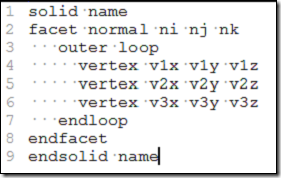


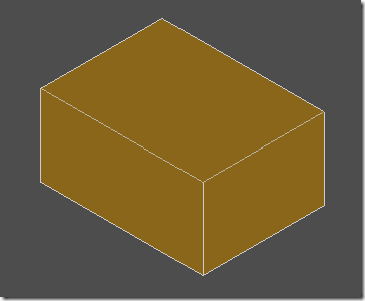
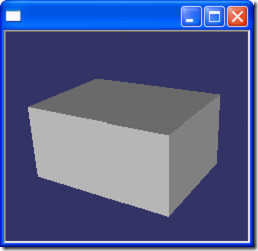
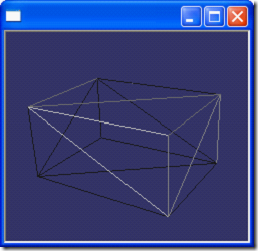
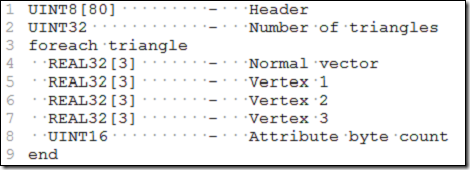
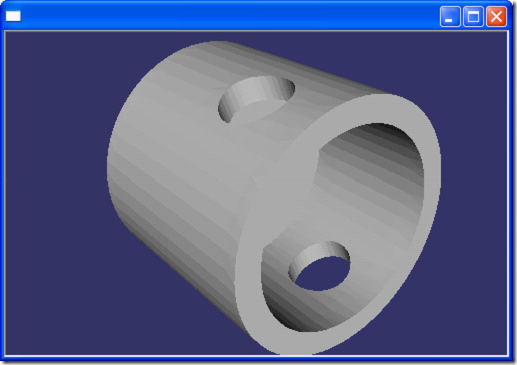
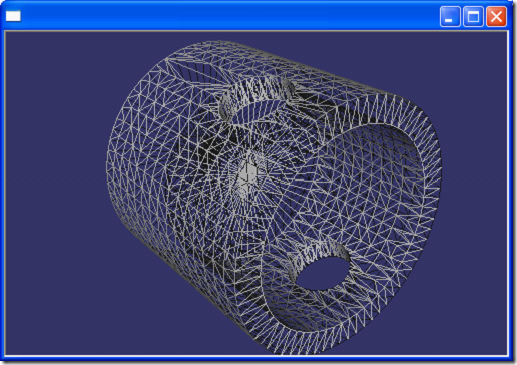
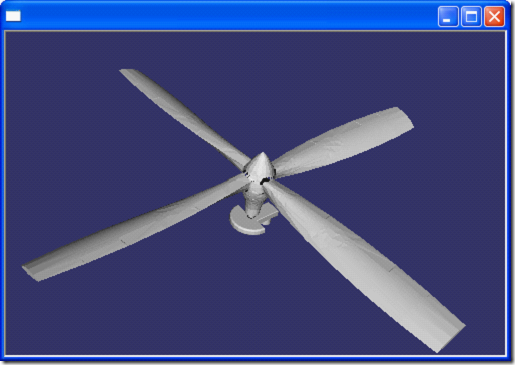
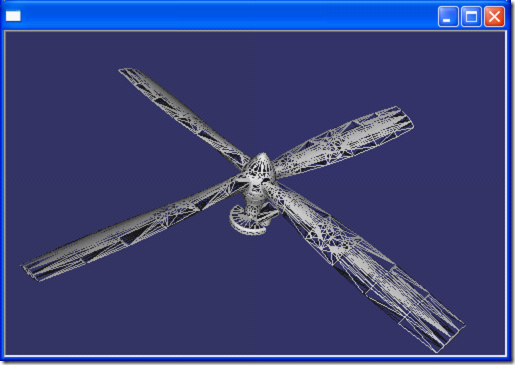

![[转]我国CAD软件产业亟待研究现状采取对策-卡核](https://www.caxkernel.com/wp-content/uploads/2024/07/frc-f080b20a9340c1a89c731029cb163f6a-212x300.png)










